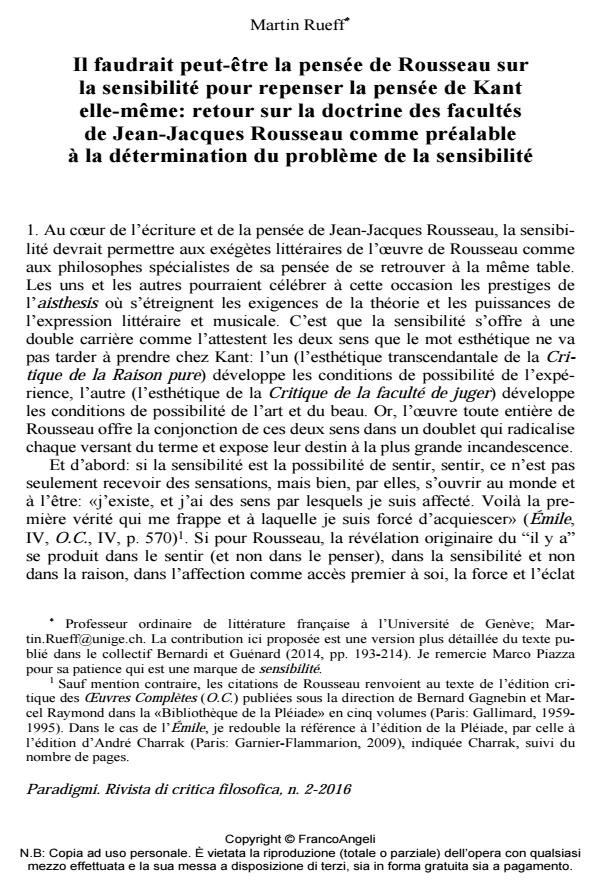We would Need Rousseau’s Thought on Sensibility to Rethink Kant’s Thought Itself: Back on the Doctrine of the Faculties of Jean-Jacques Rousseau as a Prerequisite for the Determination of the Sensibility Problem
Journal title PARADIGMI
Author/s Martin Rueff
Publishing Year 2016 Issue 2016/2
Language French Pages 42 P. 41-82 File size 347 KB
DOI 10.3280/PARA2016-002004
DOI is like a bar code for intellectual property: to have more infomation
click here
Below, you can see the article first page
If you want to buy this article in PDF format, you can do it, following the instructions to buy download credits

FrancoAngeli is member of Publishers International Linking Association, Inc (PILA), a not-for-profit association which run the CrossRef service enabling links to and from online scholarly content.
Every reader can recognize the systematical and historical importance of sensibility in Jean-Jacques Rousseau’s philosophy and literature. It could offer a crossing point for literary and philosophical perspectives. But does Rousseau possede a really coherent theory of faculty? The question should have emerged from ratonalist readers of Rousseau like Cassirer (1932) or Derathé (1948). But it was not the case. On the contrary, this problem has almost disappeared. This essay is an attempt to stabilish the criteria of this reconstruction. Our aim is first to understand the ambiguous status of sensibility in Émile: it is the starting point of Émile’s education of senses (books I and II) and it can only be passive, but also the basis of his education to morality (IV and V) and it can only be active. So, are we in front of one unique sensibility with two faces (or two moments), or in front of two sensibilities? Behind this sistematical reconstruction, the point is also historical: perhaps the reconstruction of Rousseau’s doctrine of sensibility could provide us a new basis to understand Kant and Rousseau relationships. We need Rousseau’s thoughts about sensibility to think Kant’s esthetics.
Keywords: Aesthetics, Faculty, Kant, Rationalism, Rousseau, Sensibility.
Martin Rueff, Il faudrait peut-être la pensée de Rousseau sur la sensibilité pour repenser la pensée de Kant elle-même: retour sur la doctrine des facultés de Jean-Jacques Rousseau comme préalable à la détermination du problème de la sensibilité in "PARADIGMI" 2/2016, pp 41-82, DOI: 10.3280/PARA2016-002004